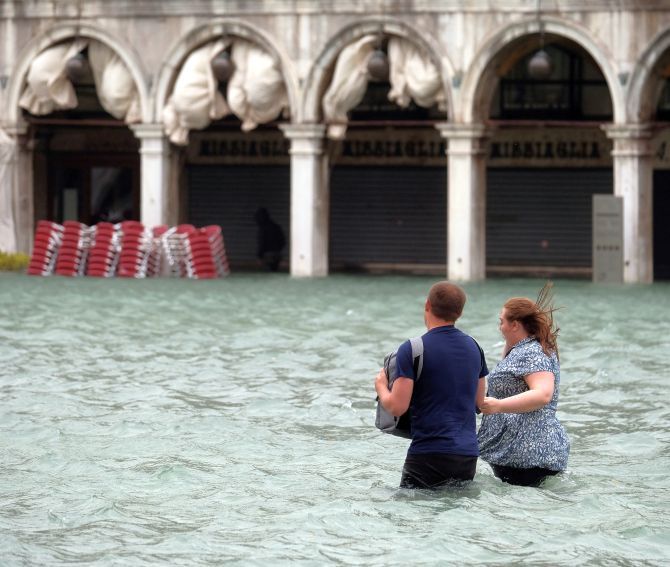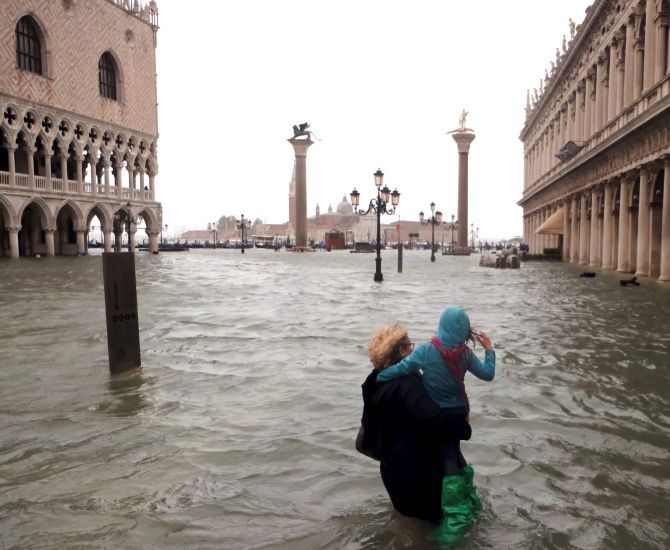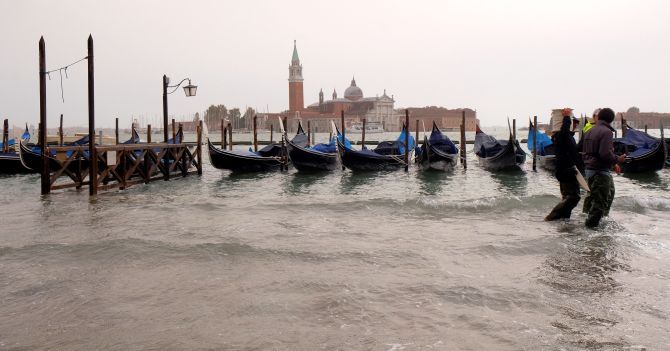Flooding reached historic levels in Venice leading to rain-soaked tourists being asked to leave the historic St Mark’s Square, as large swathes of Italy experienced heavy winds and flooding, leaving at least five people dead.
Reports said that three-quarters of Venice was flooded. Take a look.

A couple walk in the flooded St Mark Square during a period of seasonal high water in Venice. Veneto regional governor Luca Zaia says flooding this week could reach the levels of the 1966 flood that struck Venice and devastated Florence's historic centre. In November 1966, water levels had reached the highest at 194 cm. Photograph: Manuel Silvestri/Reuters

The vast expanse of St Mark's Square was transformed into a lake. Monday's high tides were caused by a low-pressure weather system over northern Italy that brought strong winds from south to north, pushing water into Venice. Photograph: Manuel Silvestri/Reuters

Officials closed major tourist attractions in Rome, including the Colosseum and Roman Forum, early due to heavy rains. Flooding at high tide has become much more common in Venice because of climate change -- a problem that will continue to worsen as seas rise thanks to increasing temperatures and melting ice sheets. Photograph: Manuel Silvestri/Reuters

Tourists and residents trudged waist-high through the water, while shops and restaurants were inundated as barriers placed across doorways failed to hold back the rising tide. Shopkeepers used buckets to remove water from their premises. Photograph: Manuel Silvestri/Reuters

Raised walkways were laid out in different parts of the city to help tourists move around the flooded areas. Photograph: Manuel Silvestri/Reuters

Boats floating in the high tides. The flooding has already claimed the lives of five people. Authorities have urged people not to travel unless absolutely necessary. Photograph: Manuel Silvestri/Reuters










